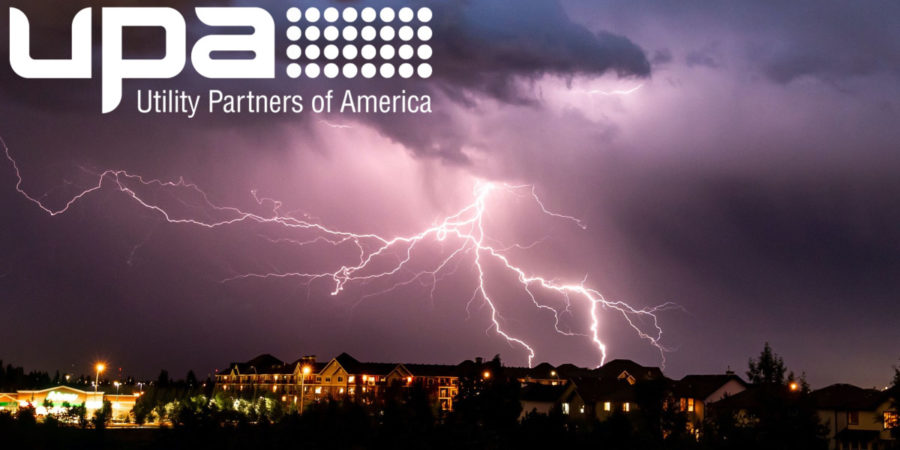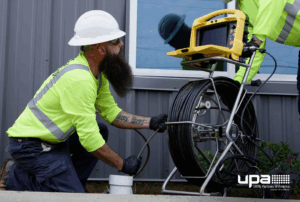It’s not every day that five simple words can save a life. But as the summer storms start to roll in, these five just might: When thunder roars, go indoors! This catchy slogan is used to bring awareness to the dangers of lightning, which is an often-overlooked weather-related occurrence. Because hurricanes, tornadoes, and flooding get the bulk of the headlines, few people realize that the U.S. has averaged nearly 50 reported lightning fatalities each year over the past 30+ years. To complicate matters further, about 10% of people struck by lightning are killed. Meaning hundreds of others are left with debilitating injuries.
Though the statistics sound scary, there are plenty of ways to protect yourself and your employees from the 25 million cloud-to-ground lightning strikes that occur across the country each year. We’ve put together a few tips that we think do the best job of educating utility workers about the dangers of lightning strikes.
Remove yourself from the situation
Remember the rhyme, “When thunder roars, go indoors?” There truly is no safe place outside during a thunderstorm. The National Weather Service provides a few very specific examples of what to stay away from during a storm, including tall objects like trees, power poles, and light poles; wide-open areas, like sports fields or golf courses; unprotected buildings or open structures, including patios; and lawnmowers and other open vehicles that utility workers could be using.
Related: Storm Response Planning: Four Tips
Watch the sky for changing weather patterns
When it comes to lightning awareness, vigilance is key. Take the time to identify a safe shelter in advance, and always watch the sky for rapidly changing conditions. However, you should know that lightning can strike even when it’s not raining. A decrease in the intensity of the rain does not necessarily mean it’s safe to leave a shelter. If you can hear thunder, no matter how faint, there’s still a risk of being struck by lightning. In fact, the National Weather Service reports that lightning can strike more than 10 miles from the location of rainfall.
Related: Utility Poles: Maintenance or Replacement
Understand the complexities of lightning strikes
When most of us think of lightning strikes, we conjure up images of direct strikes. But the reality is that direct strikes are one of the least common ways people are struck by lightning. It’s much more likely for someone to be impacted by a side flash, or “side splash.” A side flash takes place when lightning strikes a taller object near a person and the current then jumps from the taller object to the victim. Ground current, conduction, and streamer strikes can also result in severe injury or even death. To learn more about these different types of strikes and the best ways to avoid each, check out the National Weather Service’s article on Five Ways Lightning Strikes People.
Related: Electric Vehicles: How to Power Up Safely
If lightning does strike someone, act smartly and swiftly
Despite all of our best efforts to stay safe, the unthinkable still can happen. There are a few things to know if you witness someone being struck by lightning or you come across a victim. First, someone who has been struck by lightning does not carry a charge. That means they are safe to touch. You should promptly call 9-1-1 to provide details about the location and the victim. This step could be the difference in life or death. The 9-1-1 dispatcher will likely ask you to assess the situation, but it’s essential that you don’t move the victim if they are bleeding or appear to have broken bones. If all appears OK, they could instruct you to remove them (and yourself) from further harm. If the victim is not breathing or has no pulse, mouth-to-mouth resuscitation or CPR should be performed until emergency personnel arrives.
Related: Electrical Shock Prevention for Utility Technicians
No one wants to be struck by lightning, but it should remain top of mind for utility workers. Especially those who spend their days outdoors. By becoming more aware of the dangers and following these tips, you and your staff can reduce the risk.
Utility Partners of America has partnered with utility companies and energy co-ops since 1997, so we’re very familiar with the importance of keeping workers safe from unexpected weather. If you’d like to learn more, we encourage you to contact us or call (888) 667-1411 today.




